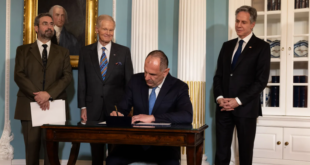
By Ken Hodgkins
The COVID 19 pandemic has ripped apart all sectors of the world’s societal fabric and rendered economies to a state of paralysis. Multilateral space diplomacy has not been immune to this chaos. This year for the first time the Legal Subcommittee of the UN Committee on the Peaceful Uses of Outer Space (COPUOS) was cancelled, and it is highly unlikely that the Committee itself will be able to meet anytime soon as a whole. Instead, later this summer, two days of “administrative” meetings will be convened in preparation for the next session of the UN General Assembly (UNGA) where the agendas will be set for the next sessions of the Committee and its subcommittees. Following on the heels of concluding the 21 Guidelines on the Long-Term Sustainability of Outer Space (LTS), an unprecedented achievement bringing together the best practices in the commercial and government sectors for space operations, and the urgent need to adopt Space Agenda 2030, member states must pull together once again to set a new course for the Committee that advances the global space enterprise.
In their recent article of 27 April 2020, in The Space Review, “Putting the White House Executive Order on Space Resources in an International Context,” Ian Christensen and Christopher Johnson laid out a solid examination of the international appetite for evaluating the White House Executive Order on utilizing space resources and tackling the broader question that such activities are a given one way or another. But the article also raises an equally important question – Whither COPUOS? The Executive Order on Space Resources, the Gateway Lunar orbiting station, the Artemis Accords establishing a permanent presence on the Moon, transparency and predictability for the burgeoning commercial sector and space traffic management in one way or another must have multilateral buy-in, and COPUOS is the only venue as of today.
Considering the historical context of COPUOS, member states must build on this sterling record of achievement to face the challenges of the next phase of space collaboration.
At the beginning of the Space Age, leading global policymakers had the foresight to understand the unquestioned need for a basic common understanding on how States would operate in space. They recognized the potential value of space as a geo-strategic tool, economic driver and scientific gamechanger. The 1957 International Geophysical Year (IGY) demonstrated that in the depths of the Cold War nations could cooperate on transformative scientific discovery. That experience convinced like-mined nations to establish in 1958 COPUOS to be the only organ of the United Nations to promote international space cooperation and consider legal issues as they may arise. Over the next 20 years, the Committee experienced the halcyon years of global space law negotiations producing the 1967 Outer Space Treaty and its subsequent four other agreements – a feat that some considered unimaginable given the Cold War tensions and that an entire body of international law was being developed in a single forum at the same time.
Throughout the next intervening two decades the Cold War rivalries sharpened debate in the Committee and Member states abandoned the development of new international space law opting to focus on non-binding principles clarifying the conduct of space activities not fully articulated in the Treaties. During this phase, the UNGA adopted principles and guidelines on remote sensing, debris mitigation, nuclear power sources in space, the sharing of the benefits of space and a safety framework for space nuclear power.
The third 20- year phase brought a new approach; that is, the review of domestic legislation and practice undertaken by States to meet their space treaty obligations. UNGA resolutions covered the concept of the Launching state, State practice under the Registration Convention, national legislation for space activities and international mechanisms for space cooperation.
This record of success and credibility had positive unintended consequences. The number of non-governmental organizations representing applications, exploration, policy, and legal issues seeking observer status increased significantly, injecting a broader view of space beyond national positions. Indeed, major aerospace companies and associations are regularly consulted by governments to provide much needed advice on issues being considered in the Committee. This has been crucial to ensure that the Committee is not working at cross purposes to the ambitions of the growing commercial sector.
This recitation of the historical context within which the Committee has operated brings us to the present-day challenge. The global community has put great stock in COPUOS as a tool for advancing an ambitious space agenda. Moving forward, the work of COPUOS must be guided by the fundamental strategic themes of transparency and predictability, resiliency, governance, sustainability in space and on the Earth, capacity-building, and interoperability. All members should begin the process now for addressing what lies ahead for the future of COPUOS.
For the US, exerting leadership is crucial. Certain actions can immediately be taken leading up to the next UNGA where the agendas for the Committee and its subcommittees will be established for 2021. For example, the National Space Council should consider of a range of forward-leaning opportunities that reinforce the role of COPUOS as the viable multilateral forum for promoting the benefits of space utilization and exploration. In this regard, a flexible and nimble approach should be developed and shared with member states with the view to forging a consensus on the next phase of the work of the Committee. This could be complimented by the State Department convening immediately, and later on a regular basis, its public consultative mechanism announced in US Federal Register Document 2020-03684, “Commercial Participation in Domestic and International Events on Safety, Sustainability, and Emerging Markets in Outer Space.”
We have now come full circle to the imperatives faced at the dawning of the Space Age and clearly unchartered waters must be navigated in a deliberate way to bring about a shared vision on multilateral space diplomacy. The Member states now have a rich and deep menu to draw from to advance the global space enterprise for the benefit of all of humanity. The question is how, and will this collective challenge be met?

Ken Hodgkins is the President of International Space Enterprise Consultants (ISEC), former Director of the State Department’s Office of Space and Advanced Technology and former US Representative to the UN Committee on the Peaceful uses of Outer Space. He can be reached at [email protected].





